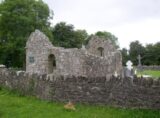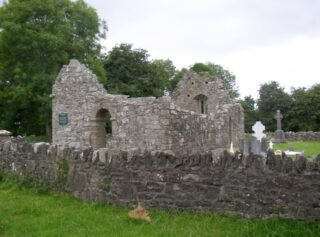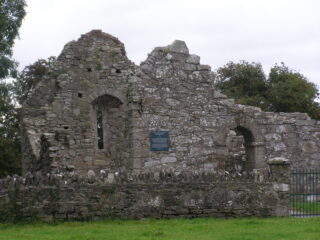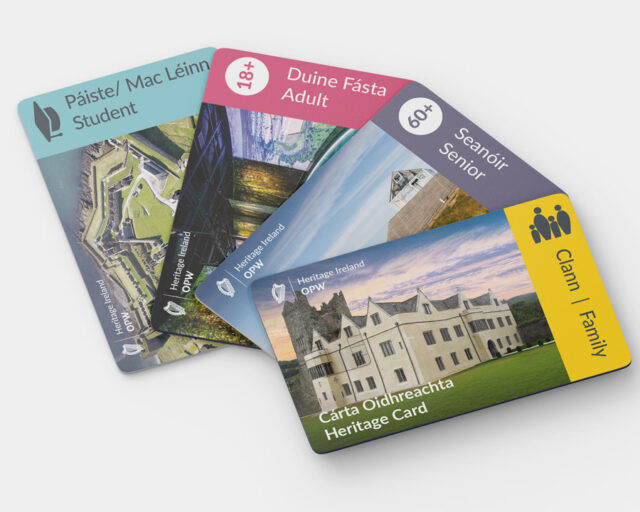Fógra
WARNING: It should be noted that these sites are unguided and a level of care and caution should be maintained during all stages of your visit. The Office Of Public Works (OPW) will not be held responsible for any damages, injuries, or losses that occur
Sheepstown Church
Sheepstown Church, near Knocktopher, County Kilkenny, now a ruin, is dedicated to Saint Muicín, a bishop and confessor who lived around the year 630. The building dates to the 12th or early 13th century, a period marking the transition from Ireland’s monastic church structure to a diocesan system. This makes Sheepstown Church a rare example of an early parish church, built well before the proliferation of such churches in the 15th and 16th centuries. Modest in size, just 15 metres long and 7 metres wide, the church is built in the Hiberno-Romanesque style, noted for its simplicity and austerity. The west doorway is unadorned, apart from a subtle beaded moulding, mirrored on the four corners of the building. A smaller doorway on the south wall may have once led to a sacristy.
One of the more curious features is a corbel on the north-west corner, known locally as the "Clock Stone". Some suggest it may have functioned as a gnomon for a sundial, an early attempt to track the passage of time. A particularly interesting artefact is built into the ruined north wall — a fragmentary cloister column, with a relief carving of a two-bodied, winged creature. The creature’s clawed lower halves and tails spiral inward toward each other. This stone, originally from nearby Jerpoint Abbey, was likely repurposed and cemented into the church wall during repair work in 1951, perhaps having once served as a grave marker in the adjoining graveyard.
Visit Historic Environment Viewer for more information on Sheepstown Church
Protect our Past - Click here to read about the importance of protecting our country’s unique heritage sites
This national monument is protected in accordance with the National Monuments Acts 1930 to 2014
Gailearaí
Suíomhanna cóngarach
Prióireacht Cheanannais
Tabhair cuairt ar an suíomh eaglasta iata is mó in Éirinn
Timpeall 6.1 km ón
Mainistir Chistéirseach Sheireapúin
Ceann de na fothracha Cistéirseacha is breátha in Éirinn
Timpeall 6.4 km ón
Caisleán Chill Chainnigh
An tseoid is luachmhaire i gcathair dhraíochtúil mheánaoiseach
Timpeall 18.4 km ón



